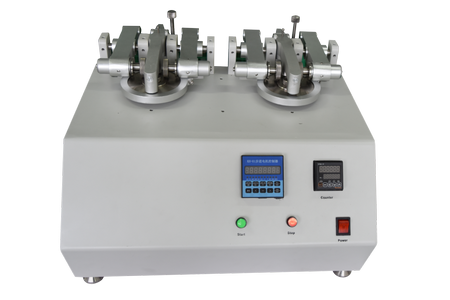
NewsInformation Center
What is the taber abraser method?
2023/11/06
The Taber Abraser method, also known as the Taber Abrasion Test, is a widely used procedure for evaluating the abrasion resistance and durability of various materials. It determines the wear resistance of a material by subjecting it to abrasion under controlled conditions using a Taber Abraser machine.
The Taber Abraser machine consists of a turntable that holds the test specimen and two abrasive wheels mounted above it. The turntable rotates, and the abrasive wheels apply a certain level of pressure on the specimen surface as they rotate against it. The relative movement between the abrasive wheels and the specimen creates a rubbing and scratching action, simulating the wear and tear that materials may experience during use.
During the Taber Abrasion Test, the test specimen is securely fixed onto the turntable, and the abrasive wheels are aligned to press against the surface of the specimen. The test is typically performed for a specified number of revolutions or a specific duration, depending on the material being tested and the test standard being followed.
After the test, the specimen is inspected visually, and the extent of wear or damage is assessed. The wear resistance or durability of the material is usually quantified by measuring the weight loss or the change in appearance, such as loss of gloss, color change, or surface roughness. The test results can be used to compare the performance of different materials or to evaluate the effects of surface treatments, coatings, or additives on the material's resistance to abrasion.
The Taber Abrasion Test is applicable to a wide range of materials, including metals, plastics, coatings, textiles, ceramics, and laminates. It is commonly used in industries such as automotive, aerospace, furniture, flooring, textiles, and consumer products to assess the performance and durability of materials under abrasive conditions.
It's important to note that different test standards, such as ASTM D4060 or ISO 9352, provide specific guidelines for conducting the Taber Abrasion Test, including variations in test parameters like load, abrasive type, and test duration. It is recommended to consult the relevant standard and follow the specified procedures to ensure accurate and consistent test results. Additionally, the interpretation of test results should consider the specific application and requirements of the material being tested.
Previous: Turkish clothing exports surged 28% year-on-year in May
N e x t : What is the ISO standard for limiting oxygen index?




